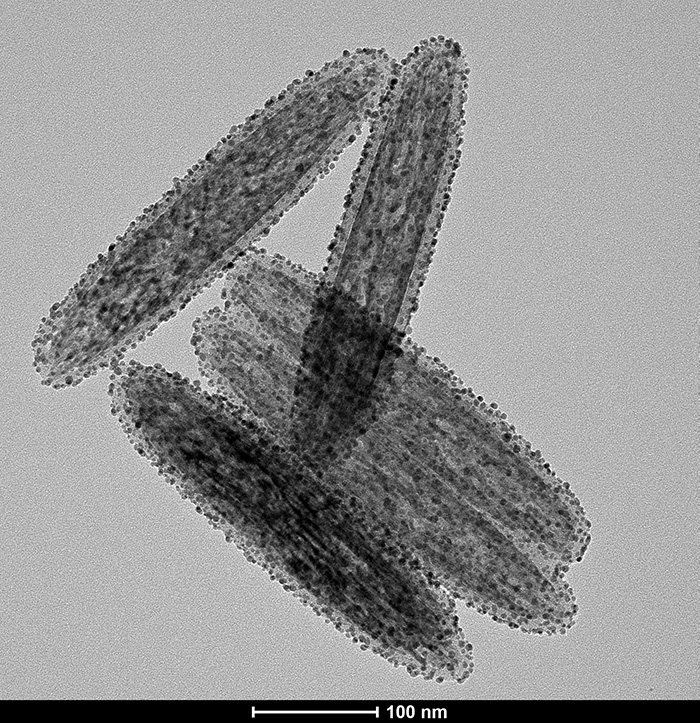

Platform Leader: Timothy James (RBA)
Deputy Platform Leader: Paul Mulvaney
Researchers
Industry Partner
Successful LIEF Project
Platform 3.2 is focused on the development of new optical security features for Australian polymer banknotes.
We are developing unique optical and magneto-optical materials suitable for use as Overt and Machine-Readable Features (MRF). The overarching goal is to produce banknote security features that are difficult to counterfeit and simple to verify. Such security features must be able to meet multiple requirements such as cost effectiveness, efficacy, durability, printability, and public safety.
Australia leads the way in the development of polymer banknote technology. With improved access to lower cost technologies, more sophisticated forgeries have been discovered. In order to maintain confidence in the currency, development of new security features is needed. The most difficult of these are overt features. These features must be visible to the public or cash handler, who can use them to quickly determine whether the note is genuine. They must be robust, printable, and difficult to replicate.
There are two projects under investigation. They both involve development of novel, magnetic or infrared-active nanomaterials that could be incorporated into conventional security printing inks, ensuring these new technologies can be directly applied to banknote printing. There are plans to carry out a proofing print trial with the RBA in the first half of 2021. This will provide the Platform with real feedback on the ink performance under banknote production conditions, and banknote quality assurance processes. This first print trial process will enable the assessment of the scale-up process for these novel materials as the first step towards possible industrialisation, as well assessing the ink’s intended performance as a banknote security feature under banknote processing conditions.
| Name | Node |
|---|---|
| Jacek Jasieniak | Monash |
| Paul Mulvaney | UoM |
| Name | Organisation |
|---|---|
| Greg Dicinoski | RBA Chief Scientist |
| Timothy James | RBA |
| Sani Muke | RBA |
| Name | Node |
|---|---|
| Nicholas Kirkwood | UoM |
| Dr. Eser Akinoglu | UoM |
| Name | Node | Student type |
|---|---|---|
| Heyou Zhang | UoM | PhD. |
| Dingchen Wen | UoM | PhD. |
| Trent Ralph | UoM | MSc. |
There has been good progress on Platform 3.2 in developing new banknote security feature ideas, where two distinct projects are progressing well. Each project is critically evaluated at monthly Platform meetings. Indeed, stagegating in two potential security feature projects were closed down after stagegate meetings determined that they were not viable due to previously patented approaches. The constant evaluation of projects under consideration demonstrates the rigour applied to the management of the Platform to ensure projects remain within the Platform scope. With regards to the Platform scope, the Platform remains on track to have at least one material available for an RBA print trial in 2021.
The RBA decided in 2021 not to continue support for the near-infrared (NIR) emitting materials. Instead, extra funds have been injected into accelerating the development of the magnetic ink concept. RBA will condense the extra funds plus the PhD stipend into a postdoctoral research fellow position to fast-track scale-up and testing of the magnetic inks.
The Monash node was successful in an ARC LIEF bid that will provide small-scale modular printing capabilities, providing the opportunity of running small-scale print trials using multiple printing approaches in-house.
The Platform has two projects running concurrently, developing two separate banknote security feature concepts, where both magnetic and optical nanomaterials are being investigated for inclusion in banknote inks.
Project 1 – Development of magnetic inks. Significant effort has been placed into the modelling of the magnetic and optical properties of magnetic nanomaterials with COMSOL Multiphysics, which provides a basis for designing materials with desirable properties. In addition, improved synthesis protocols were developed for large-scale production of silica coated magnetite as an orientable material in printable inks.
Project 2: Machine Readable NIR Inks. A number of unique, infrared sensitive materials were identified for investigation as machine readable features (MRFs). At least one of these materials for inclusion in a printable ink is now moving to a proofing trial, where proof of concept testing has been conducted demonstrating the efficacy of the materials. The primary requirement here is strong NIR absorption and low visible absorption or scattering. Commercial production via a Japanese supplier is being investigated.

Figure 1: Magnetic nanorods are made by silica encapsulation of FeOOH followed by reduction to magnetite. This material is a scaleable, non-aggregating magnetic material.
The program initially started with five ideas. The program is stage gated, i.e. new ideas can be introduced but after an agreed time point, if progress is unsatisfactory, projects are discontinued. This can involve a complete halt but more typically means shifting it across to purely scientific goals such as thesis completion or publication.
The primary risks we believe the projects have are:
The Platform is on target to produce:
The pilot scale print trial in 2021 will provide a good point to ascertain how we are managing these new materials and the program in general.
The program is also sponsored through an LP Grant to Prof Ann Roberts an AI on the Centre. She has recently become a CI on a new ARC Centre of Excellence for Transformative Meta-Optical Systems (TMOS). Her approach focuses on top-down structuring and plasmonic effects.